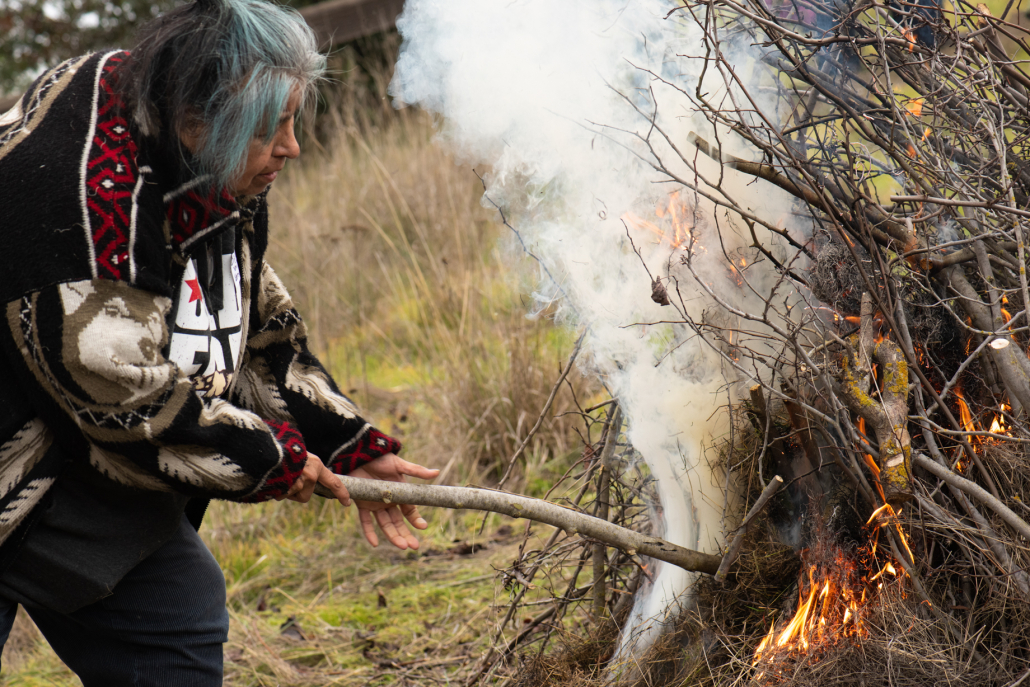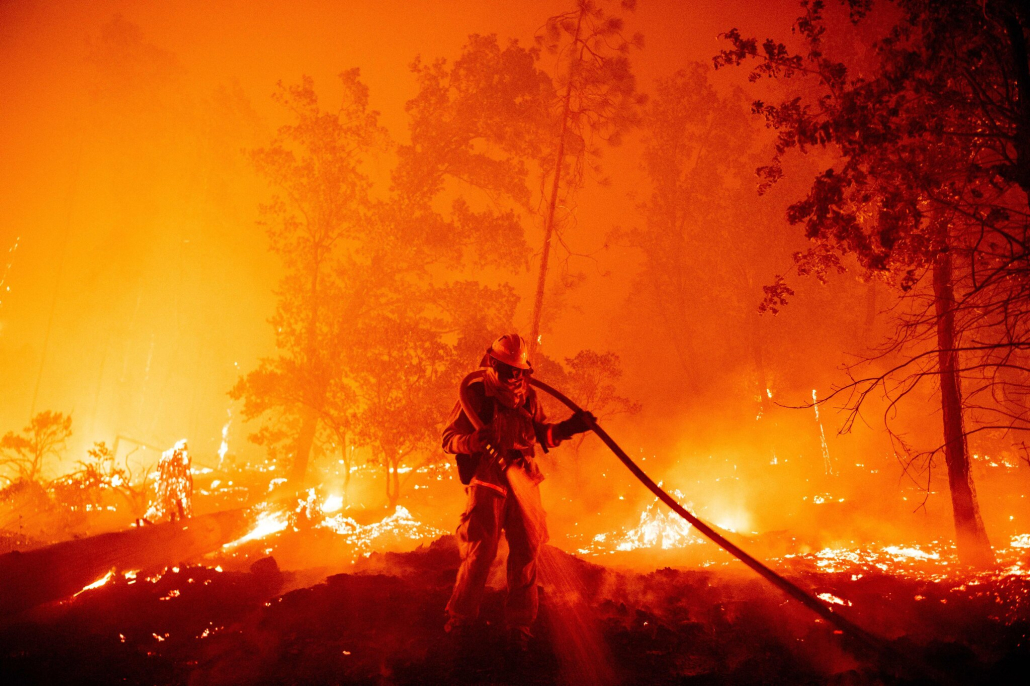USC experts talk wildfire impacts

Wildfires in the American West have, throughout the 21st century, transitioned from a seasonal affair to a year-round hazard. Seven of the 20 deadliest wildfires in California happened in the last five years, and 2020 saw the 1-million-acre Dixie fire — the second-largest in state history. The Daily Trojan spoke with USC experts on the exacerbating effects of climate change and drought on the impacts of wildfires, wildfires’ effects on human health and ways to improve wildfire mitigation.
Rebecca Miller, a postdoctoral scholar at the Huntington-USC Institute on California and the West, described the current crisis as having stemmed from previous flawed approaches to wildfire mitigation.
“Right now in California, we have an overabundance of vegetation, which stems from historic wildfire suppression policy,” Miller said. “These wildfire suppression policies, which dominated much of the 20th century, stemmed from the erroneous idea that fire was bad for ecosystems, that it was actually detrimental to their health. But now, of course, we recognize that fire is actually an integral part of California’s ecosystems: these ecosystems evolved over millennia to coexist [with] and often rely on fire.”
Indigenous populations, having known this for millennia, had conducted prescribed burns — wherein undergrowth would be burned under controlled circumstances — before they were outlawed in the early 20th century. Now, Miller said, California is adopting prescribed burns back into its suppression policy.
“What California is doing is it’s trying to increase fuel treatments, which are efforts to reduce the overvegetation that we’ve got, based on these historic wildfire suppression policies that didn’t allow us to remove some of that undergrowth over decades,” Miller said.
William Deverell, director of the ICW and professor of history, spatial science and environmental studies, acknowledged a need to “hold in higher regard and partner with” Indigenous groups to reinstate prescribed burns.
“We’re learning a lot from Indigenous people, whose prescribed burning practices were largely squeezed out from them by successive waves of conquest in the American West,” Deverell said. “We need to pay attention to them and collaborate with them.”
Such collaboration is part of the work conducted at the ICW, Deverell said, particularly through their project The West on Fire.
“We received a grant [from the Sierra Nevada Conservancy] to superintend four prescribed burns of forest properties; some are tribal and some are private,” Deverell said. “We have tribal partners in the southern Sierra, and we’re also working with a Girl Scout ranch.”
The project will train tribal youth in the certification process to conduct prescribed burns, Deverell said. The burns will take place near the end of 2022, depending on weather conditions.

Among the other work conducted by the ICW are courses on Western wildland fire at the Dornsife College of Arts, Letters and Sciences, archivals of documented and oral history, and a six-episode podcast hosted by Deverell entitled “The West On Fire.”
“There’s a long one on Smokey Bear: What is this thing, and why has it so captured the imagination of people across American history for about 75 years?” Deverell said. “We also talked to formerly incarcerated people who became firefighters and, as a consequence, got their sentences either reduced or [had their] record expunged. We talked to public health physicians over at [the Keck School of Medicine] who study Western wildland fire smoke, and how dangerous that is for people with respiratory and pulmonary trouble.”
The Daily Trojan spoke to one such expert interviewed for the podcast — Ed Avol, a professor of clinical population and public health sciences at Keck — regarding the health effects of wildfires.
“One subtlety that many people don’t appreciate is it doesn’t have to be close for it to have effects on you,” Avol said. “What we’ve seen, certainly in the last few years, is that wildfire smoke can travel hundreds, if not thousands, of miles, and affects people and populations many, many miles away from the initial location of the fire itself.”
Avol categorized effects into short-term and long-term.
“In the short term, we begin with the respiratory effects: there’s the eye irritation, there’s the smoke, the smell, the respiratory inflammation and difficulty breathing because of the concentration of gasses and particles in there,” Avol said. “The problem is that, in some ways, people might think of wildfire smoke as being generic … In fact, of course, depending on what’s burning, what is in the smoke can be very, very different.”
These effects are “more than additive” in the midst of the current pandemic, Avol said, given that the coronavirus also causes respiratory illness.
“If you’re in an area with poor air quality, or it’s a wildfire situation, and you are exposed to COVID, chances are … there’ll be a heightened response,” Avol said. “It’s like one plus one equals three or four; it doesn’t equal two, so it becomes more problematic. And there’s a number of studies that have been published, and a number of studies underway, that make clear that the combined effects of pollution and COVID are probably eight to 10% or higher.”
In the long term, Avol described effects beyond the respiratory system.
“Repeated exposures, or changes in the body’s response, to [wildfire smoke] can affect your metabolism, can affect your function, can affect your ability,” Avol said. “There are some suggestions, because of the small size of the particles, that there could even be neurological or central nervous system effects.”
Avol also noted detriments to mental and psychological health, including anxiety and depression, whether due to displacement by evacuation or exposure to wildfire pollution.
“There have been occasions where the skies had been orange or red, and you can definitely smell the smoke in the air, and it just seems eerie and almost unnatural. For many people, this is stress-inducing — makes it difficult for them to sleep, difficult for them to carry on with their normal activities … [they] start to question their own health,” Avol said. “[It’s] a whole other level of anxiety if you actually have to evacuate your home and even another level if you have to do it on very short notice.”
To prevent smoke exposure, Avol recommended remaining indoors and blocking outside air but noted that such actions contradict coronavirus concerns.
“From a COVID perspective, being inside an enclosed space is exactly what you don’t want to do; you want to increase the ventilation, you want to increase the air exchange, you want more outdoor air to dilute what’s indoors … If you’re trying to do both these things, they’re sort of competing and contradictory,” Avol said. “You can’t get too wound up in this. I think you have to be a little realistic: if you’re not infected with COVID, and you’re not sheltering in place with many other people for whom you don’t know what their health status is, then you deal with the primary insult, which is the outdoor wildfire smoke.”
In the long term, Deverell emphasized the importance of continuing “an urgent conversation about fire.”
“I’d love to say [the ICW] has some impact on wildlife reduction; I think that’s probably too ambitious for a relatively small humanities outfit,” Deverell said. “But I do think we’ve contributed to a wider-ranging conversation about Western fire that takes history seriously, and then makes connections across disciplines through all kinds of ways in which the public can interface with us.”

Miller listed a “number of different barriers” that still remain against prescribed burns. In 2020, Miller co-authored a paper published by Nature Sustainability detailing the barriers for prescribed burns, such as private landowners, who fear they would be held liable for unintentional damages caused by prescribed burns gone rogue.
“The California legislature, in recognition of the risk that private landowners are placing themselves in when it comes to these potential liability concerns, has recently passed laws which have changed the type of liability that private landowners would be subject to,” Miller said. “The idea is that it lessens that fear of liability and financial loss when doing a prescribed burn.”
In their paper, Miller et al. cited negative public opinion, limited federal funding, limited federal training or certification programmes, weather conditions, inadequate firefighter availability and environmental regulations as additional barriers — based on interviews with government employees, state legislative staff, nonprofit representatives and academics.
Regardless, Miller noted the progress made, saying that people “have a pretty solid understanding at this point” of wildfires and their effects.
“Fire is not something that happens in the summer or the fall anymore; it seems to be happening all the time,” Miller said. “People across the state are just more aware of these events because how could you not be? They’re happening every single year. People are paying attention to their risks, and they’re paying attention to what they need to do to better protect themselves.”

